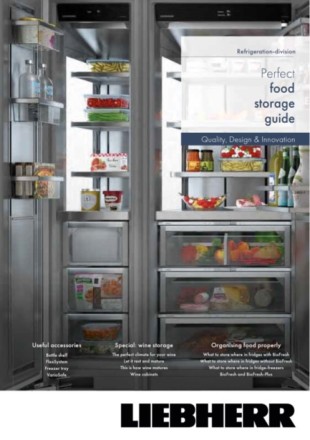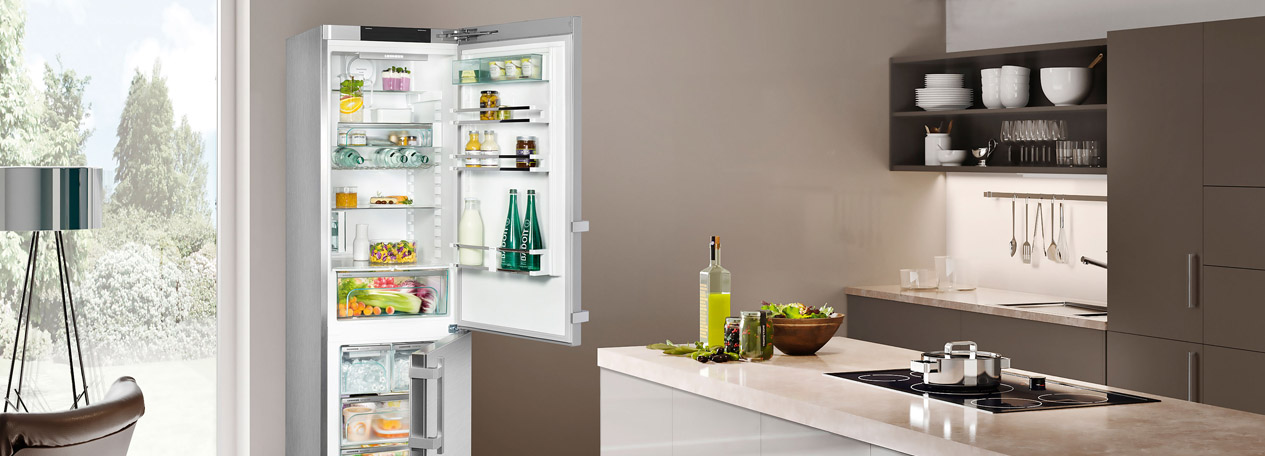Fridge zones: store food correctly
In conventional refrigerators there are several temperature zones that can differ by up to 10°C. This is due to the static cooling that many refrigerators work with. With such a large temperature difference, there is no question that there are cooler and less cool storage locations for your groceries.
The following always applies to refrigerators: It's colder below than above. Classic devices usually have three levels, the upper, middle and lower compartment. Then there is the refrigerator door and the vegetable compartment. Find out here what belongs where.
| Storage location | Temperature | Food |
| Refrigerator door | 8-10 degrees | The temperatures in the refrigerator door are milder. Eggs and butter are safe in the upper half of the door. Jams, dressings, ketchup, cans and tubes also find their place here. |
| Top compartment | 8-10 degrees | The temperatures in the upper compartment are warmer. Long-lasting foods such as hard cheese, pickles in jars (cucumbers, olives) or prepared foods that are consumed promptly should be stored here. |
| Middle compartment | about 5 degrees | Due to the temperature and the pleasant altitude, this area is ideal for storing dairy products of all kinds - i.e. yoghurt, cheese, sour cream, quark, pudding, etc., but home-made dishes can also be stored here. |
| Lower compartment | 2-3 degrees | The coldest zones are usually on the lowest shelf in the refrigerator. Perishable foods such as fish, meat and sausages should be stored here. |
| Vegetable drawer | 6-8 degrees | In the separate vegetable compartment at the bottom, it is six to eight degrees Celsius warmer. This is ideal for almost all types of vegetables and fruit. |
Tip: Tropical fruits that are sensitive to the cold such as lemons, bananas and tomatoes do not belong in the refrigerator, as they lose their aroma. Potatoes have no place in the fridge either, as their taste changes.
Food in the freezer
Most refrigerators have their own freezer compartment; larger refrigerators are usually a combination of refrigerator and freezer compartment and have several freezer compartments. Frozen food or food that is to be frozen belongs in the freezer. If you have a refrigerator with a freezing compartment, you should pay attention to the freezing capacity, which is usually given in stars.
| Star rating | Temperature | What to freeze and how long for |
| 1 star | at least -6°C | short-term storage of frozen food, up to 1 week storage time |
| 2 stars | at least -12°C | medium-term storage of frozen food, up to 3 weeks storage time |
| 3 stars | at least -18°C | long-term storage of frozen food, depending on the product, up to a few months |
| 4 stars | at least -18°C or less | freezing of food and long-term storage of frozen food, the duration of storage of frozen food can vary from 2-12 months, depending on the type of food |
Tips for everyday life
- Only store food in the compartments that are suitable, otherwise it will spoil quickly.
- Always close opened food packaging and store cooked food in air tight containers, to prevent the formation of bacteria.
- Be careful not to overload the refrigerator. This increases power consumption.
- Let warm food cool down completely before putting it in the refrigerator.
- You should regularly clean the refrigerator and defrost it every now and then.
What temperature needs what?

True to the motto “cool properly - enjoy intensely”, the food cooling guide is the ideal reference aid for everyday life. Which freezing techniques are particularly energy efficient? Which food belongs where again? And how do you properly defrost your freezer?
The food cooling guide is a free guide that you can download. Check out our free guides on refrigeration, freezing and defrosting in our download area!
Sort food perfectly in the fridge

The best tips and information at a glance: Arrange food correctly. What is stored where? Useful guides on fridge division. Special: Wine storage - for the perfect storage of your wine.

